Class 11 Fairy Painting
Introduction to British Literary Art of the Nineteenth Century
Focus: Fairy Paintings
Fairy paintings during the Nineteenth Century served as a bridge between fantasy and reality, highlighting the artistic expression of an era marked by both romantic idealism and the harsh truths of industrialization.
Importance of Fairy Tales
Charles Dickens profoundly articulated the value of fairy tales in his quote from 1853:
"In a utilitarian age, of all other times, it is a matter of grave importance that fairy tales should be respected ... A nation without fancy, without some great romance, never did, never will, hold a place under the sun."
This statement underlines the cultural significance of fairy tales, asserting that they are essential in fostering imagination, creativity, and romance in society amidst the utilitarian nature of the age. Fairy tales act as vessels of escapism and provide a narrative structure through which moral and societal values can be explored.
Christopher Wood's Perspective
Art critic Christopher Wood emphasized that the Victorians had a deep longing for belief in fairies, which symbolized an escape from the harsh realities of an unromantic and materialistic scientific age. The fascination with fairy lore served not only as entertainment but as a critical means for individuals to reconnect with their imaginations and the mystical aspects of life that modernity threatened to erase.
Notable Fairy Paintings
George Cruikshank
Queen Mab
Year: 1821
Medium: Oil on canvas
Size: 19 x 20 in.
Collection: Forbes Magazine Collection
Significance: Represents the whimsical nature of dreams and the nighttime fairy world, drawing on Shakespeare's character to explore themes of love and enchanting fantasy.
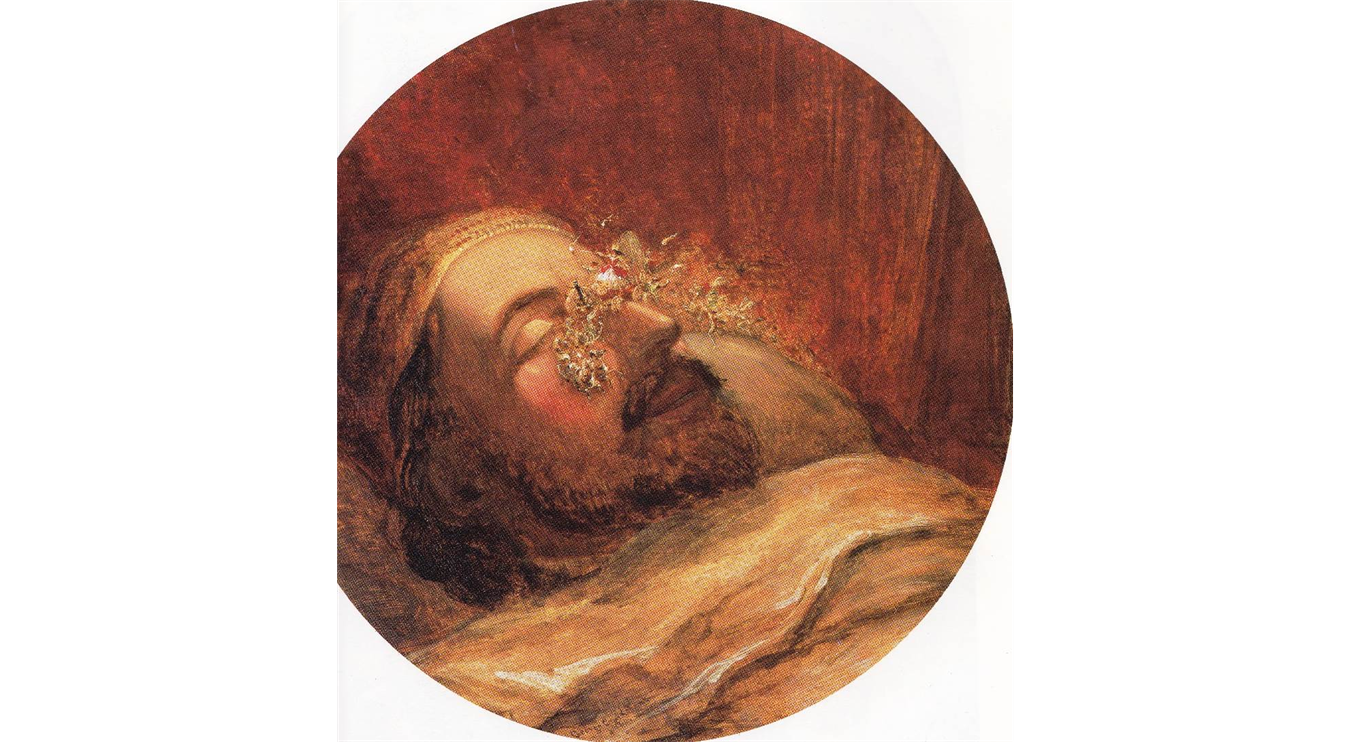
Henry Fuseli
Titania's Awakening
Year: 1780-90
Medium: Oil on canvas
Size: 87 ½ x 110 3/8 in.
Collection: Kunstmuseum, Winterthur
Significance: Captures the moment of awakening in Shakespeare's A Midsummer Night's Dream, emphasizing themes of love, transformation, and the supernatural.
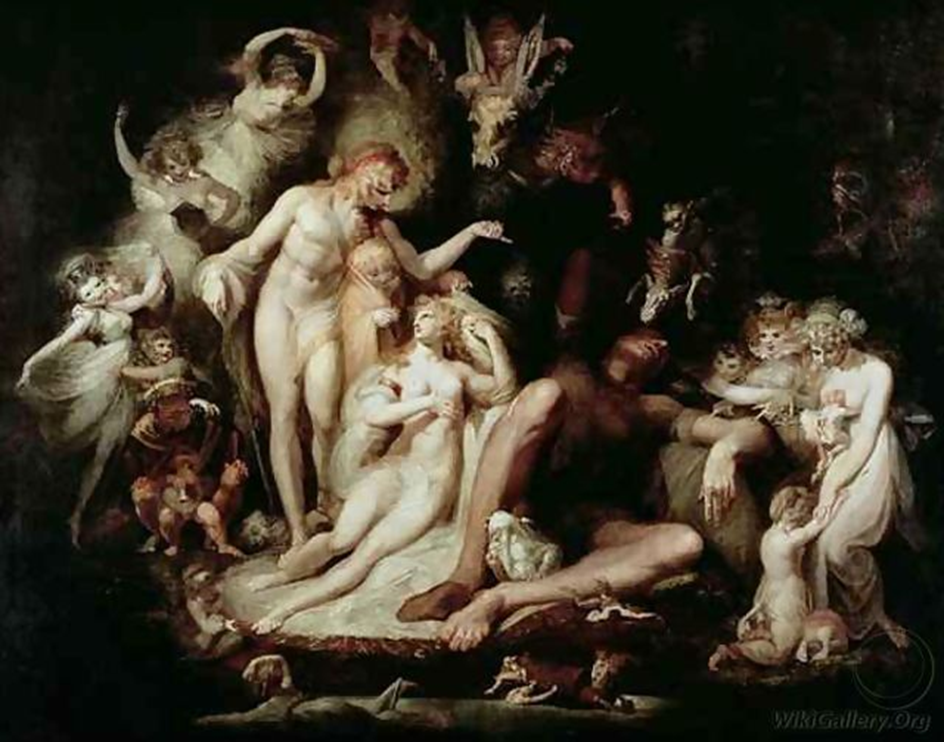
A Midsummer Night's Dream
Year: c. 1790
Medium: Oil on canvas
Collection: Tate Britain, London
Significance: An exploration of desire and the complexities of love showcased through an allegorical lens of fairy intervention.
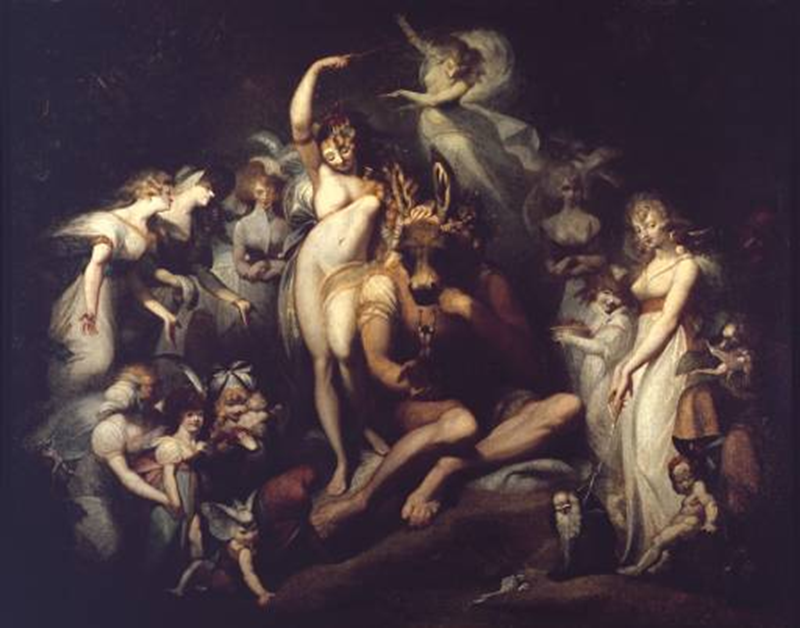
Titania and Bottom
Year: 1786-89
Medium: Oil on canvas
Size: 85 x 108 in.
Collection: Tate Britain
Significance: Illustrates the comedic and romantic entanglements facilitated by the fairies, underlining the intersection of reality and fantasy.
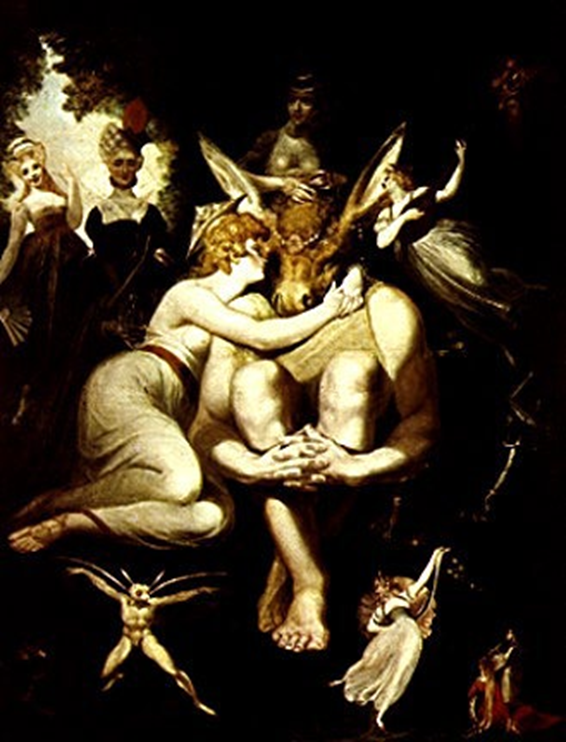
Francis Danby
A Midsummer Night's Dream
Year: 1832
Medium: Watercolor
Size: approx. 8 x 11 in.
Collection: Oldham Art Gallery
Significance: A serene depiction that captures the enchantment of the forest settings and the fairy world inherent in Shakespeare's narrative.
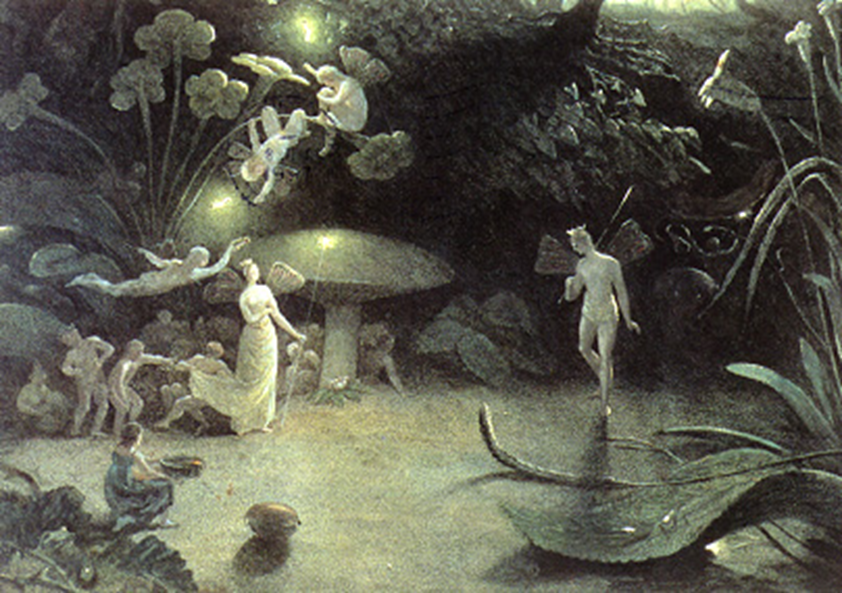
Joseph Noel Paton
The Quarrel of Oberon and Titania
Year: 1850
Medium: Oil on canvas
Size: 39 x 45 ½ in.
Collection: National Gallery of Scotland
Significance: Explores themes of conflict and resolution within love narratives, as Oberon and Titania’s quarrel represents larger societal conflicts.
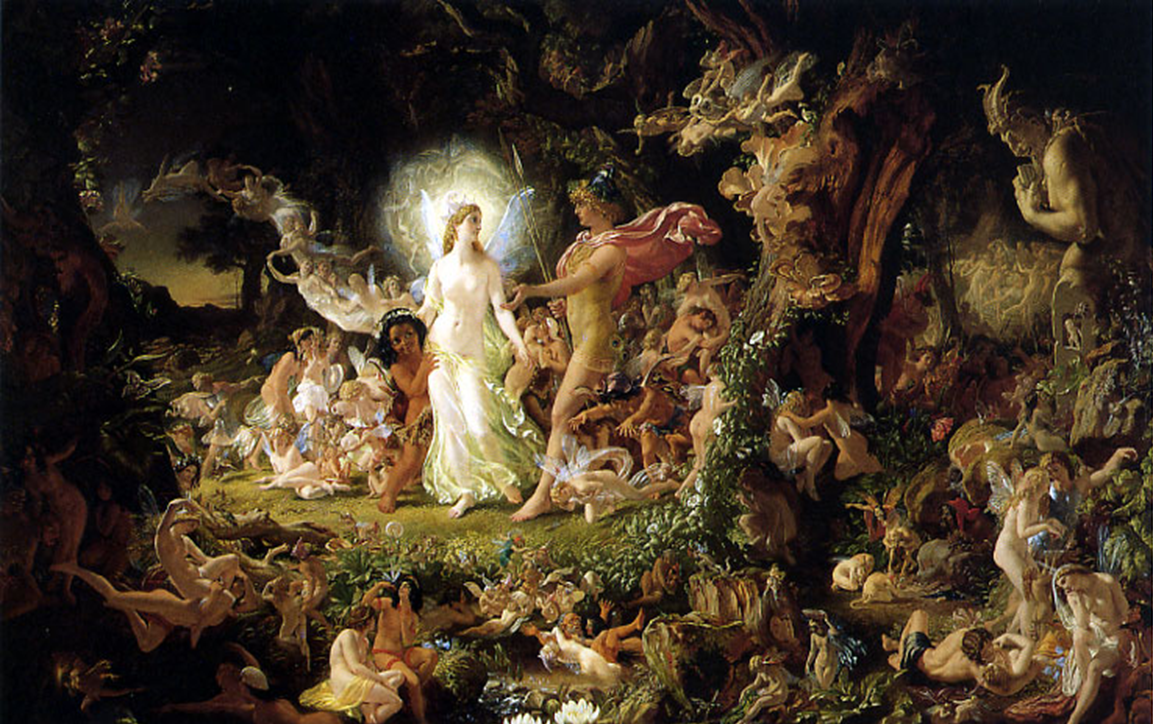
The Reconciliation of Oberon and Titania
Year: 1850
Medium: Oil on canvas
Size: 39 x 45 ½ in.
Collection: National Gallery of Scotland
Significance: Contrasts the earlier depiction of their quarrel, highlighting themes of forgiveness and unity amidst discord.
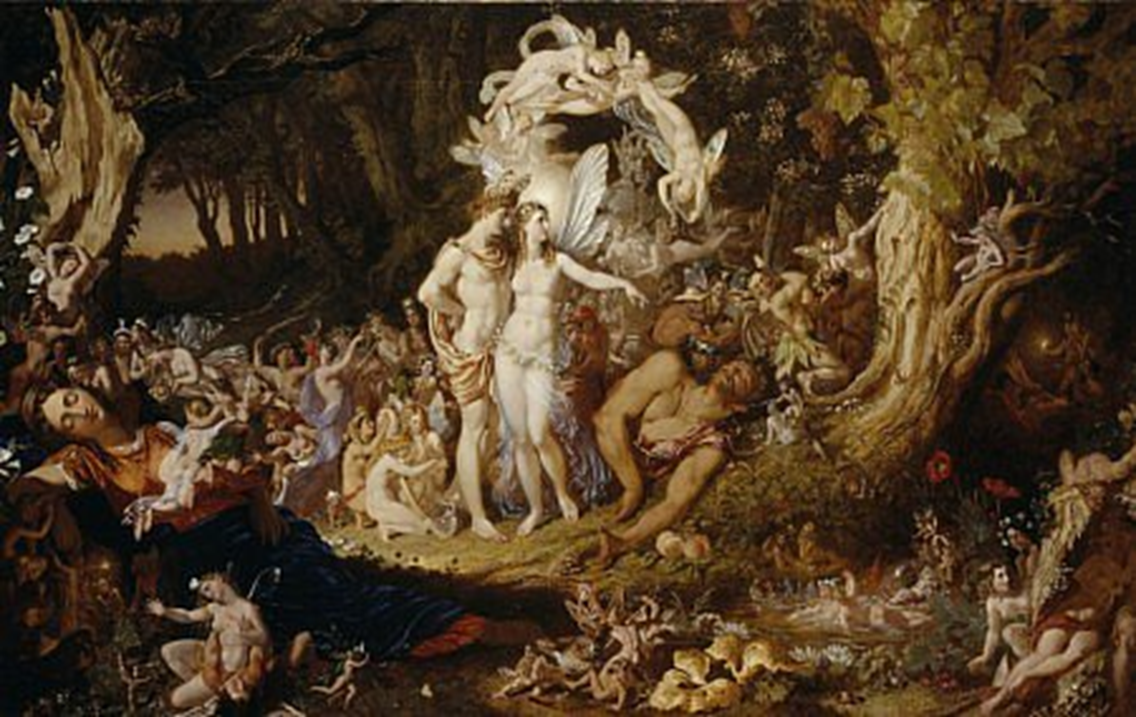
David Scott
Puck Fleeing from the Dawn
Year: 1837
Medium: Oil on canvas
Size: 38 x 57 ½ in.
Collection: National Gallery of Scotland
Significance: Captures the mischievous spirit of Puck, embodying the playful yet fleeting nature of dreams and fairy tales.
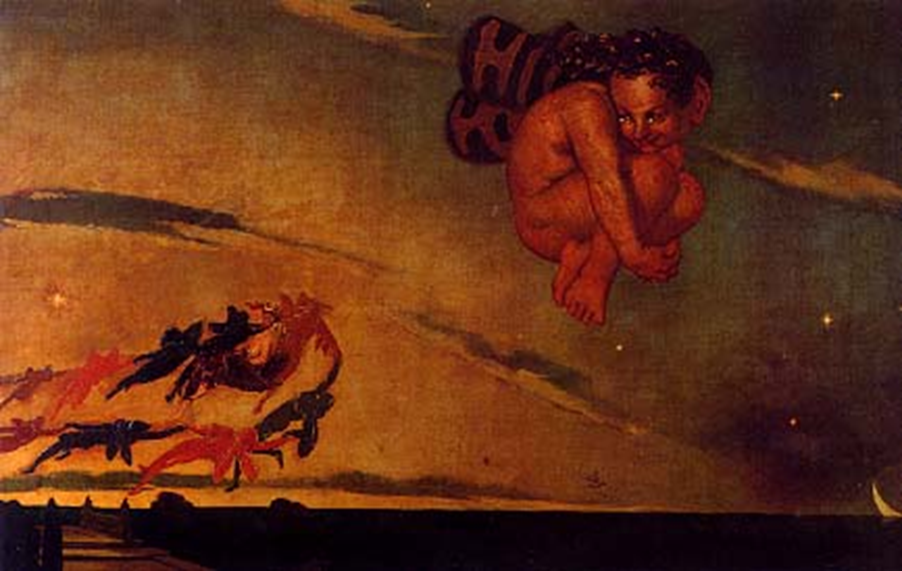
Daniel Maclise
The Disenchantment of Bottom
Year: 1832
Medium: Oil on canvas
Size: 40 x 40 in.
Collection: Wadsworth Athenaeum, Hartford, CT
Significance: This painting focuses on transformation and the struggles between reality and fantasy encountered by the characters.
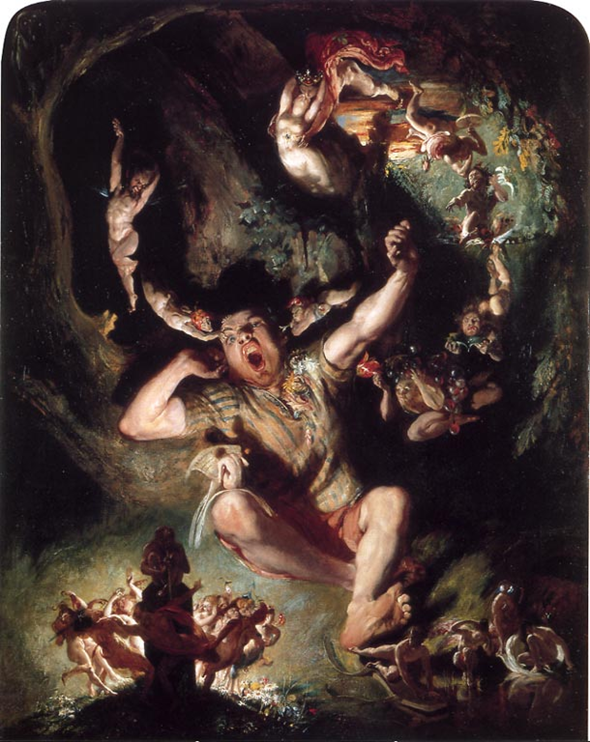
Robert Huskisson
Midsummer Night's Fairies
Year: 1847
Medium: Oil on wood
Size: approx. 11 x 13 in.
Collection: Tate Britain
Significance: A charming exploration of the fairy realm; the lightness of the composition reflects the joyful nature of fairy narratives.
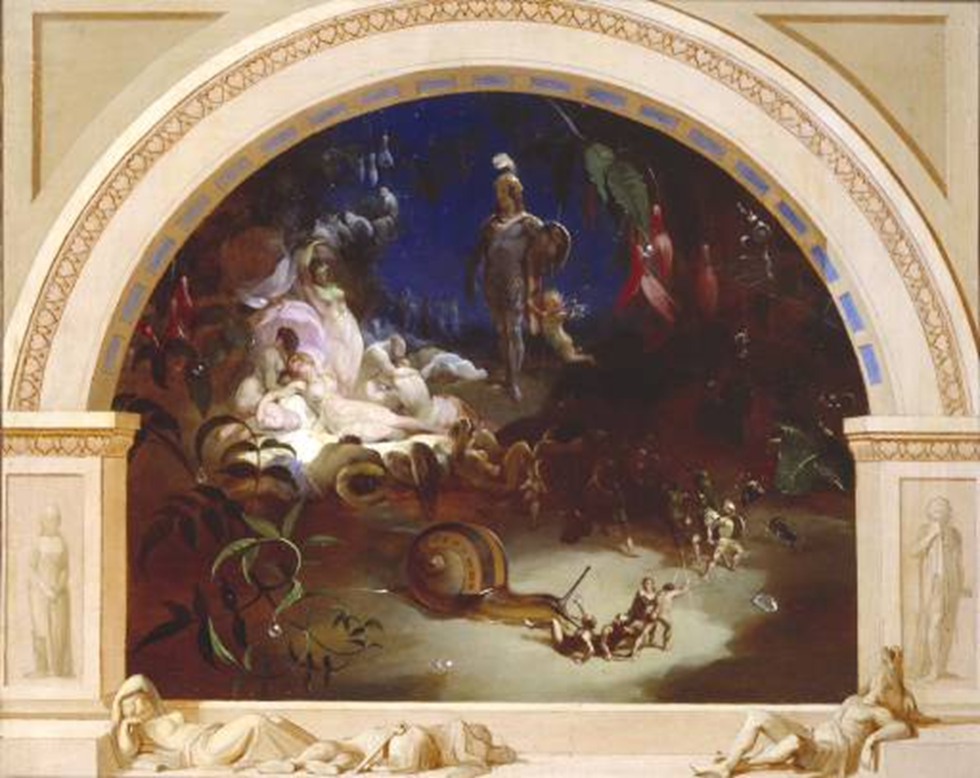
William Blake
Oberon, Titania and Puck with Fairies Dancing
Year: c. 1785
Medium: Watercolor and drawing
Size: 19 x 27 in.
Collection: Tate Britain
Significance: Highlights the interconnectedness of the fairy characters, emphasizing themes of joy and magic within the supernatural.
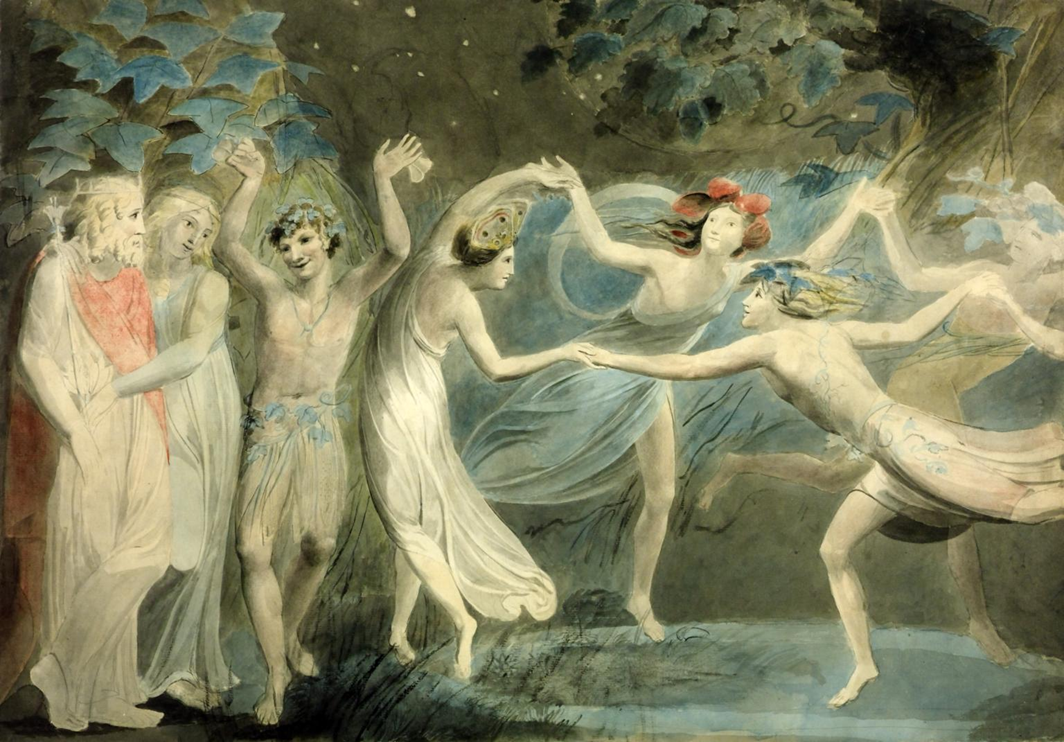
Frank Cadogan Cowper
Titania Sleeps in A Midsummer Night’s Dream
Year: 1928
Medium: Oil on canvas
Size: 35 x 45 ½ in.
Collection: Kapitan Museum, Tokyo
Significance: Portrays the serene beauty and delicacy of the fairy queen in a moment of vulnerability, contrasting the typical portrayals of strength.
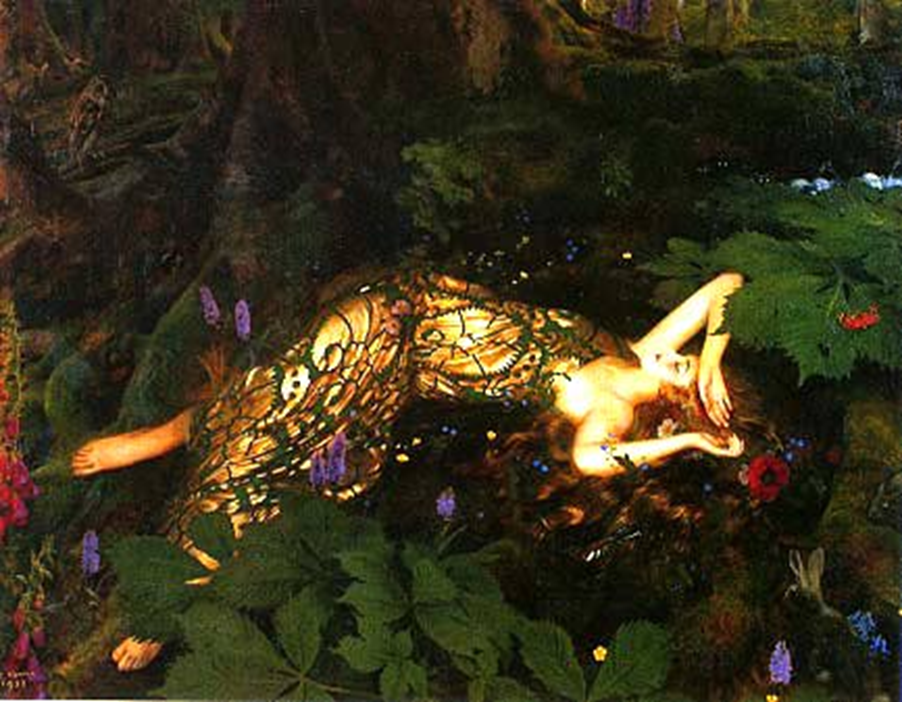
Additional Fairy Themes in Art
The Tempest
Various artworks inspired by Shakespeare's The Tempest feature characters like Prospero, Miranda, and Ariel, showcasing diverse artistic interpretations that highlight themes of power, magic, and reconciliation:
Prospero Relating His History to Miranda, Charles Rolt, 1857
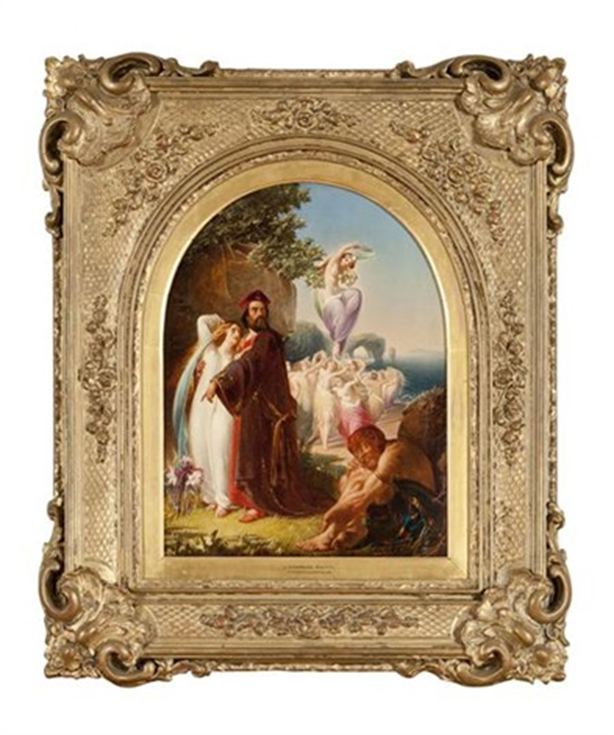
A Scene from the Tempest, George Romney, c. 1790
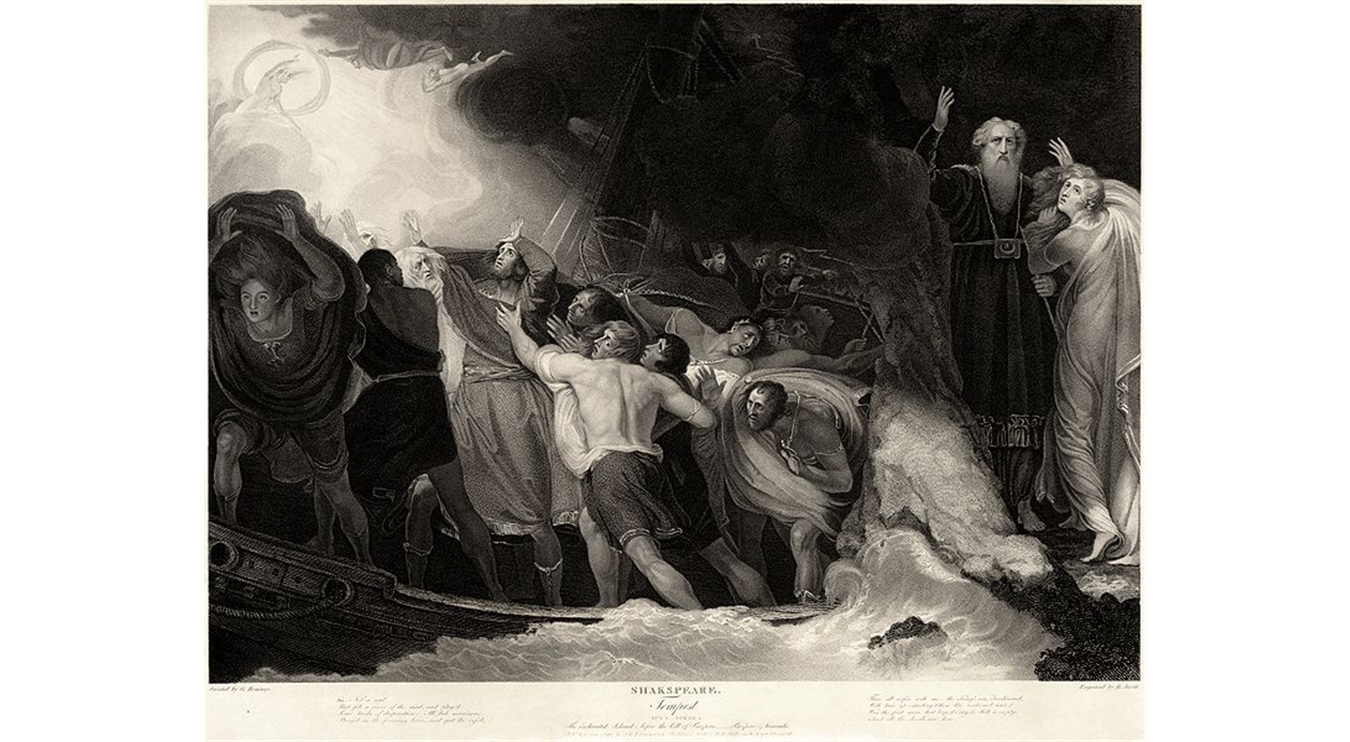
Caliban, John Hamilton Mortimer, 1775-76
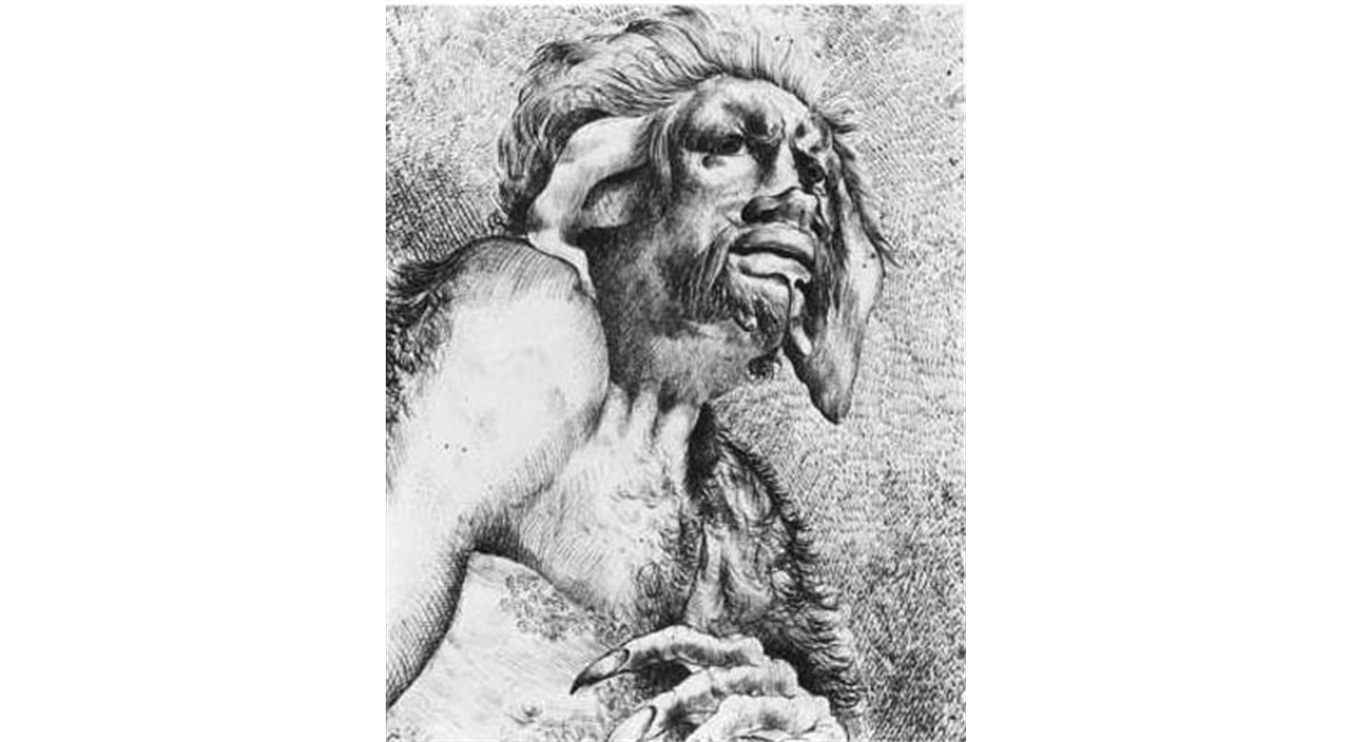
Priscilla Horton as Ariel, Daniel Maclise, 1838-39
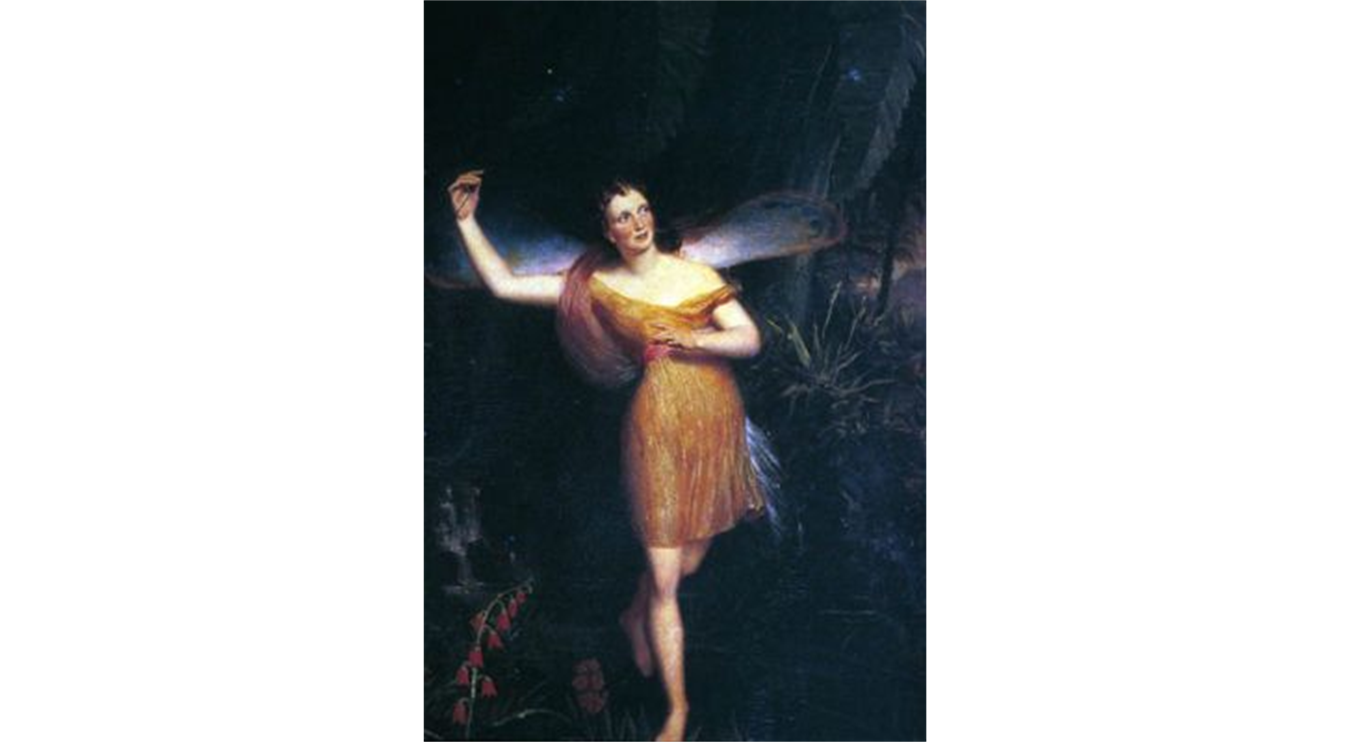
Ariel on a Bat's Back, Henry Singleton, 1819
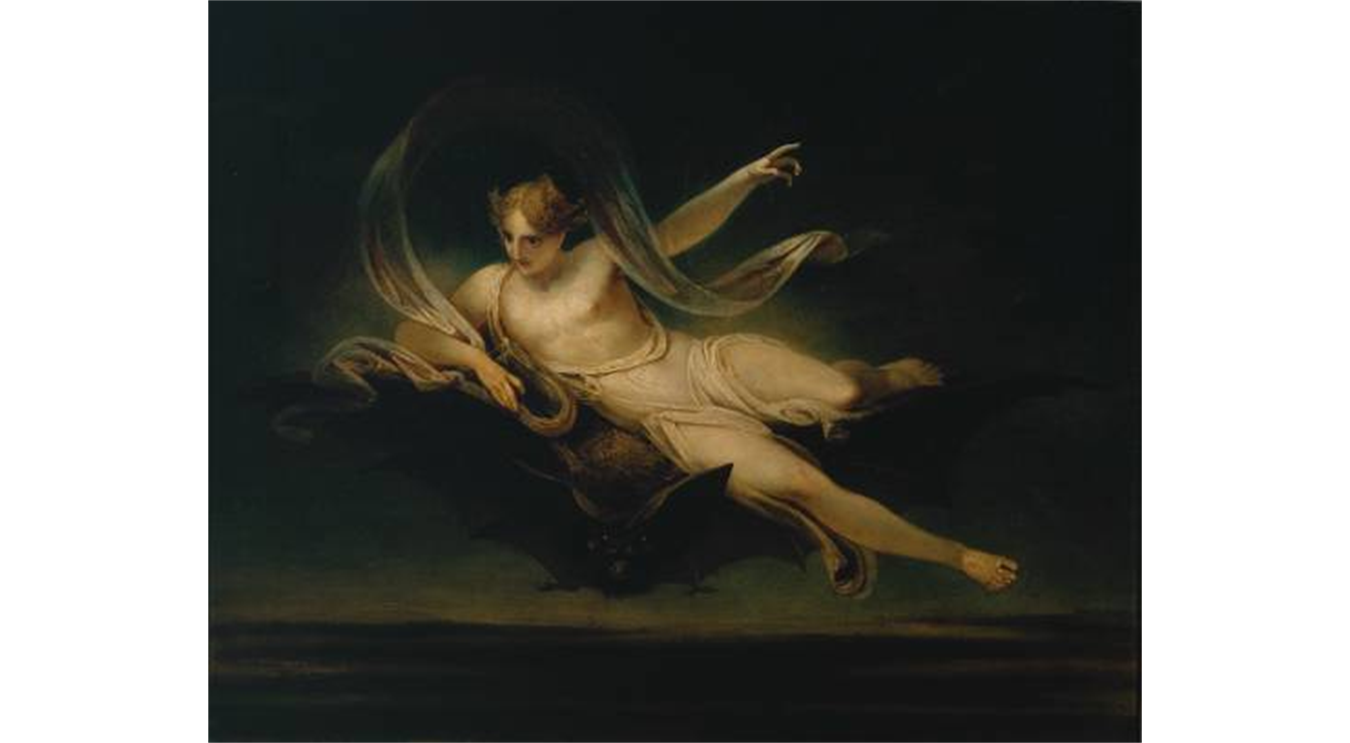
Ferdinand Lured by Ariel, John Everett Millais, 1849
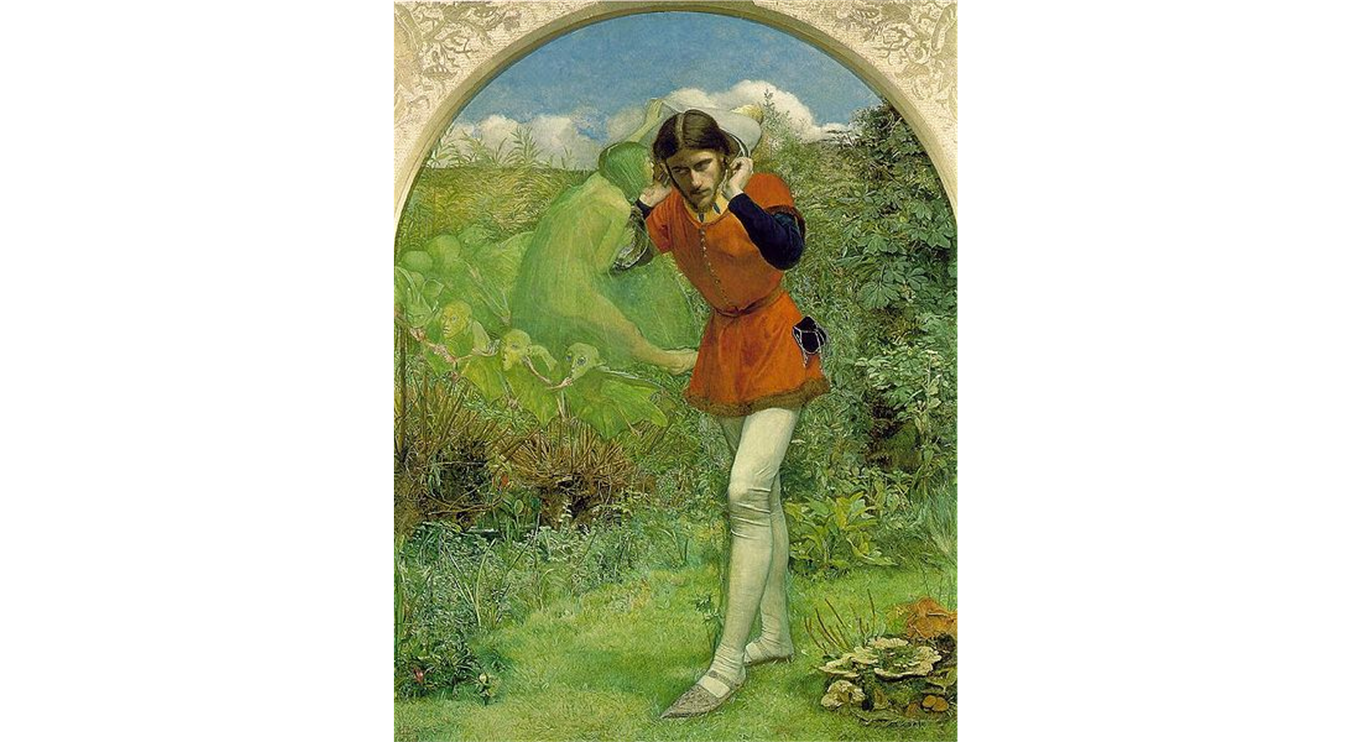
Miranda, John W. Waterhouse, 1916
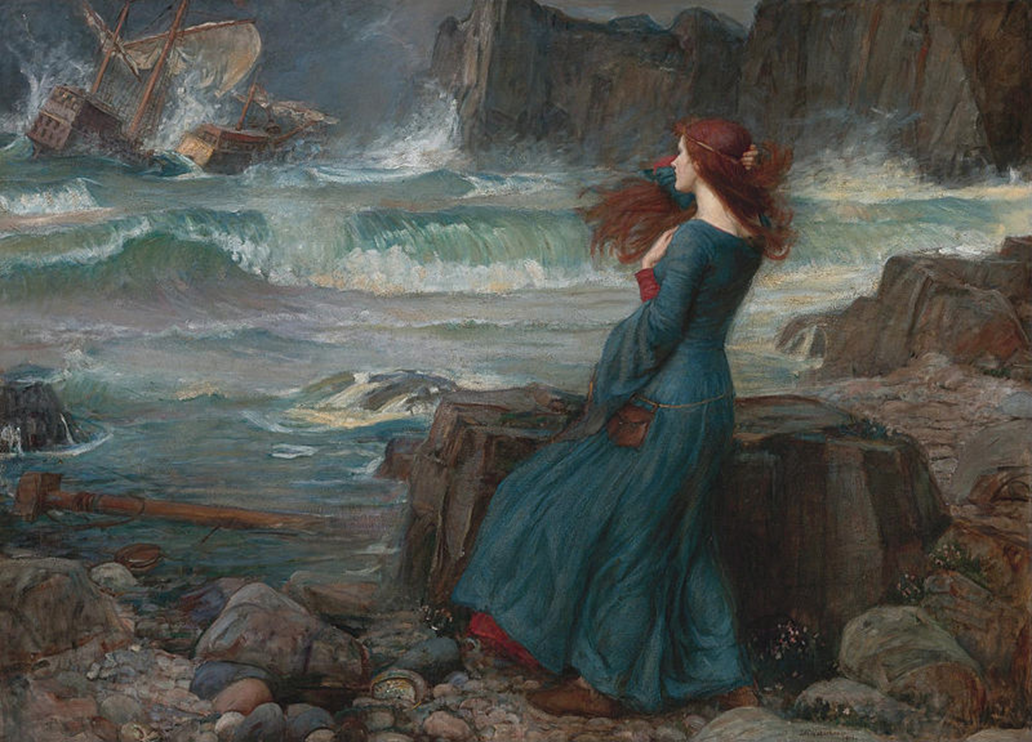
Illustrators and Fairy Tales
Illustrators like J.M. Barrie and Lewis Carroll contributed significantly to the visual culture of fairy tales:
Barrie’s works featured illustrations by F. D. Beford, 1911

Carroll’s Alice’s Adventures in Wonderland was illustrated by John Tenniel in 1865
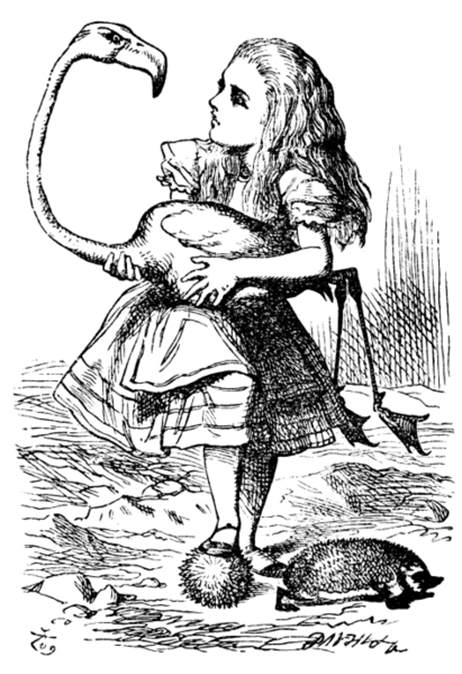
George Cruikshank’s Grimm's Fairy Tales, 1823, showcased the darker aspects of fairy narratives, drawing on folklore's moral lessons.

Arthur Rackham
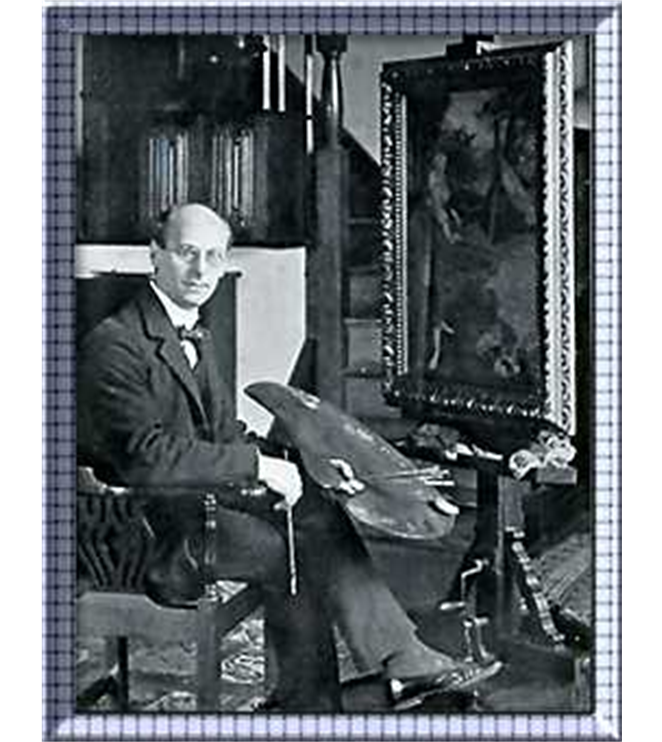
A prominent illustrator known for his detailed and whimsical fairy illustrations, including:
Rip van Winkle, 1905
The Adventures of Alice, 1907
Peter Pan, 1912
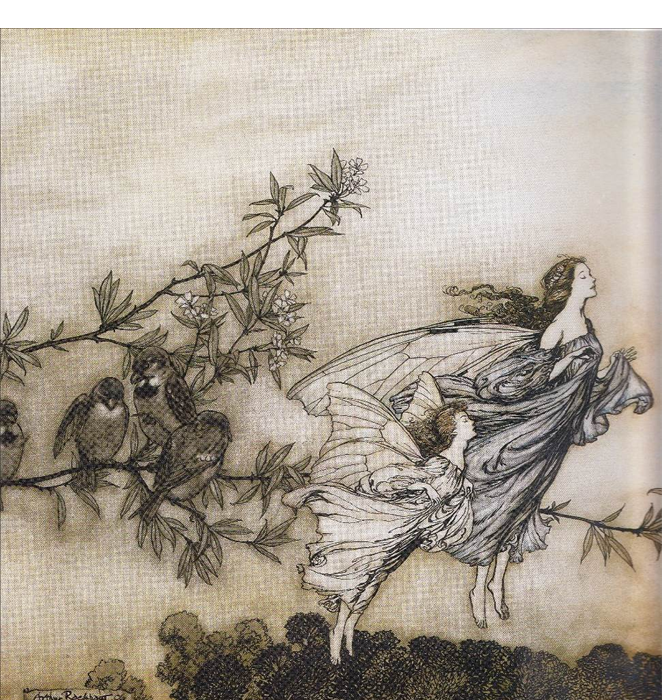
Mother Goose, 1913
Various fairy illustrations found in published works from 1906 to 1912
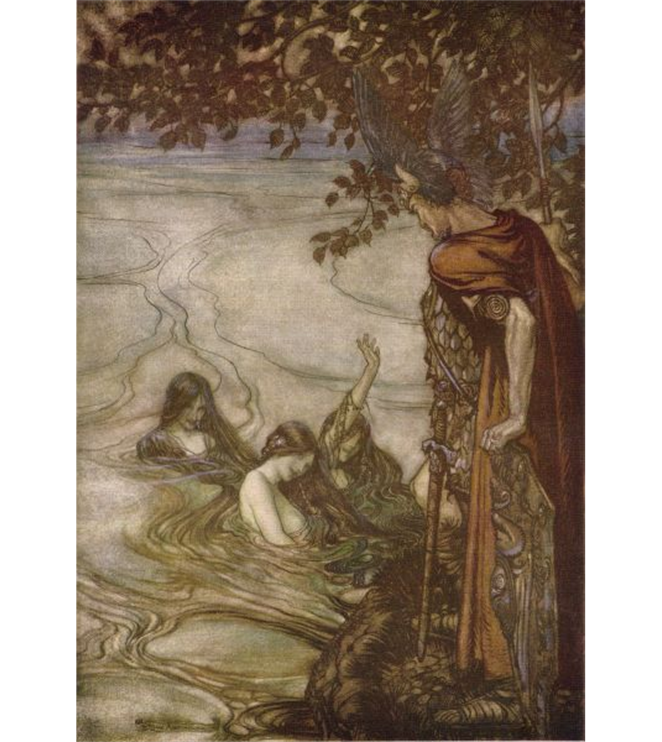
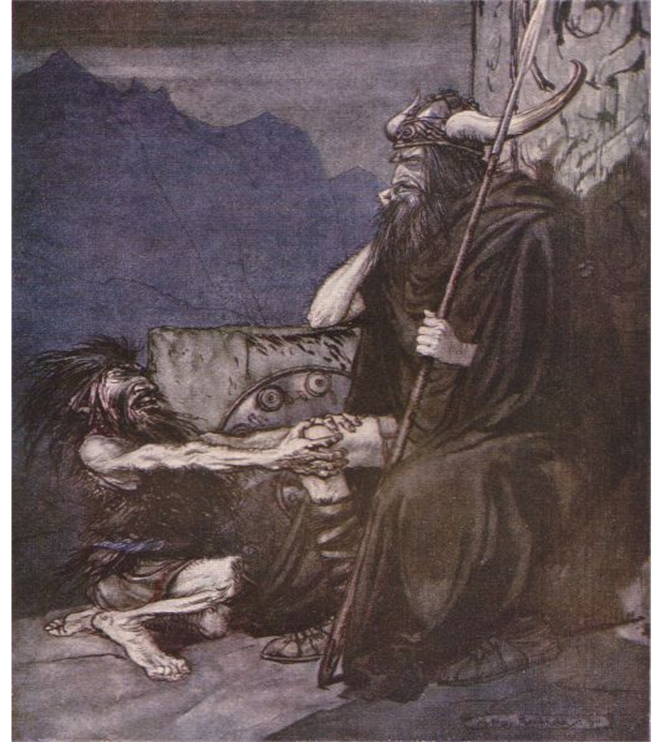
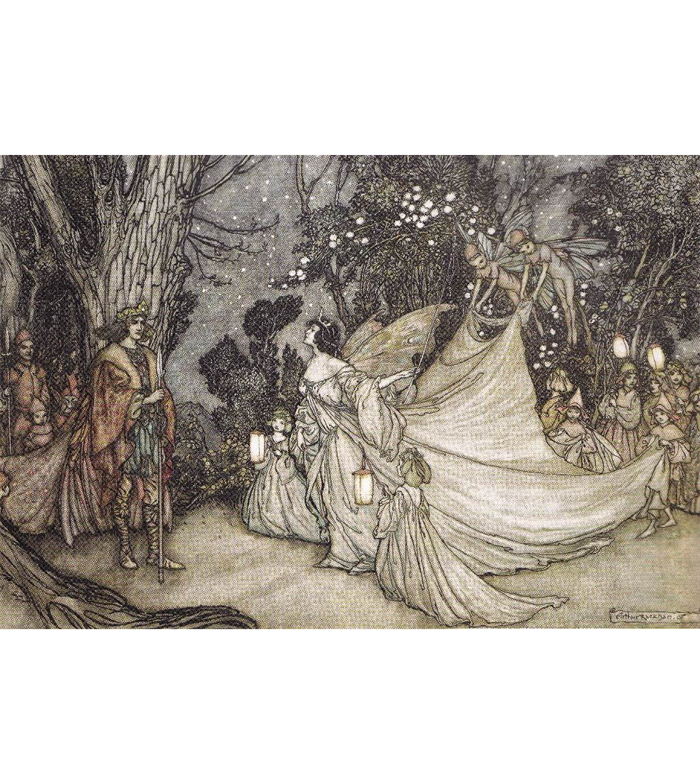
Cottingley Fairy Photographs
The Cottingley Fairy Photographs, taken in June 1917, depict fairies and sparkled wide public interest and debate regarding the existence of fairies, bridging the divide between reality and fantasy.
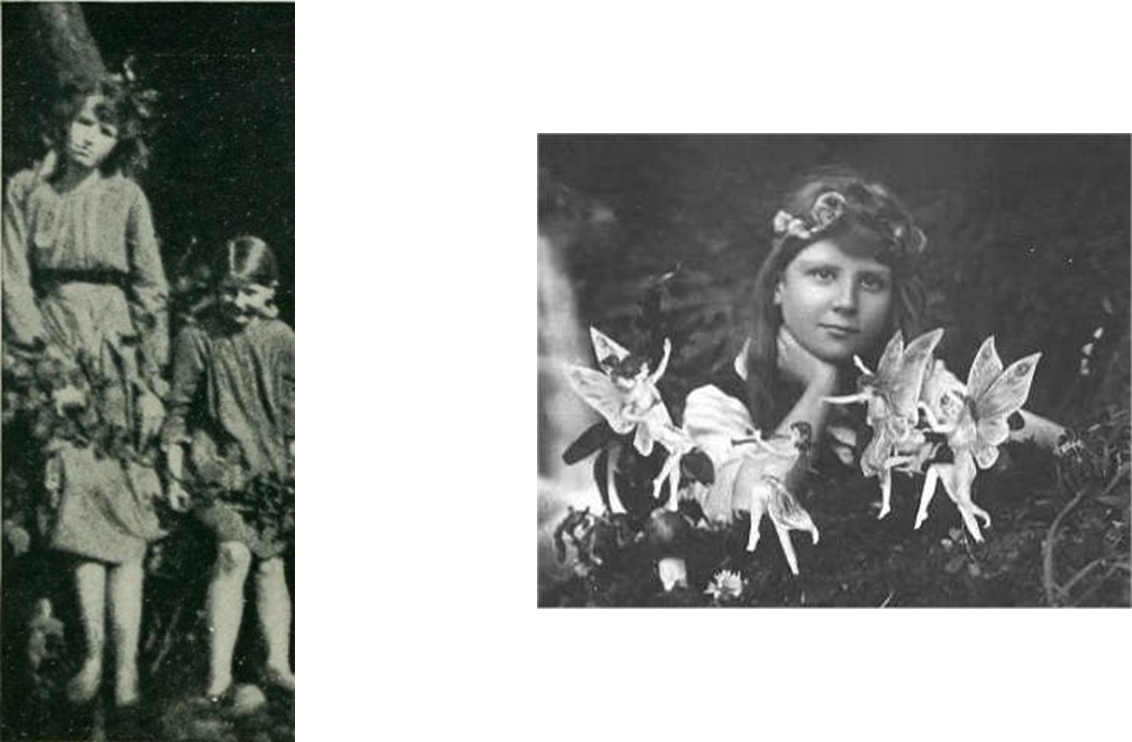
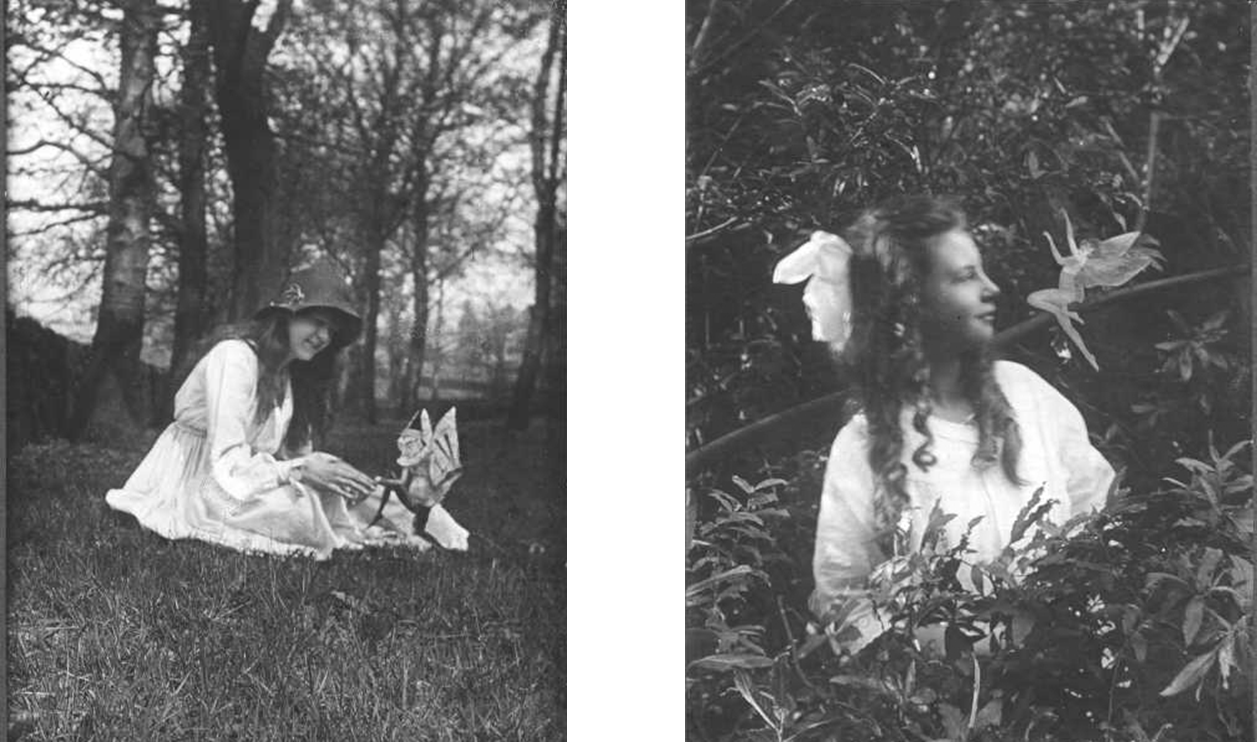
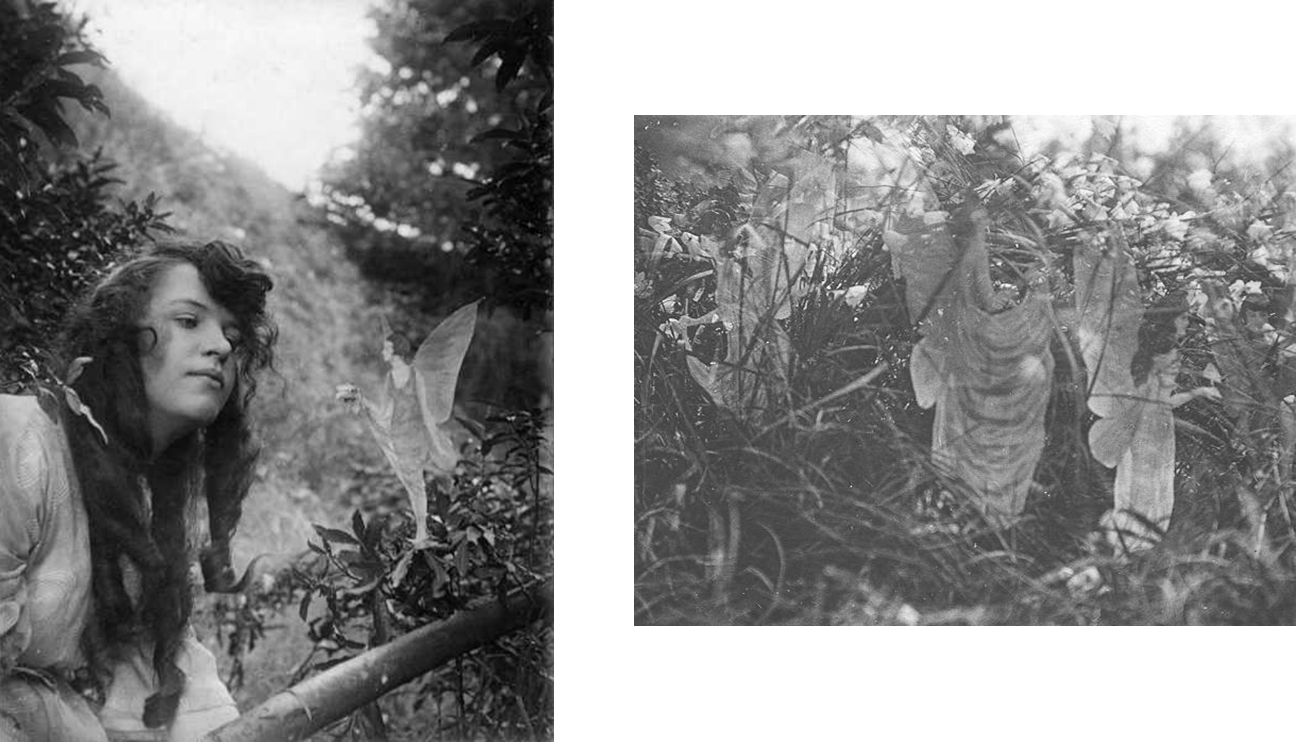
Isambard Kingdom Brunel
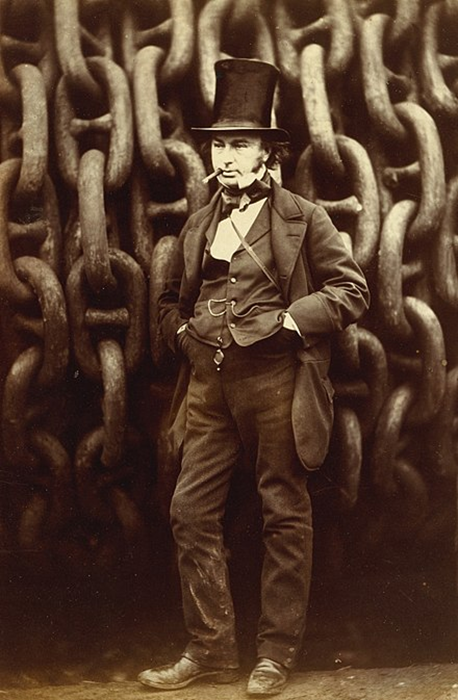
1806-1859
English Civil Engineer
One of 19th century’s engineering giants
A leader of the Industrial Revolution
Designed the GWR (Great Western Railway)
Transatlantic steamships
Fascinated with fairy paintings & commissioned the below for his dining room
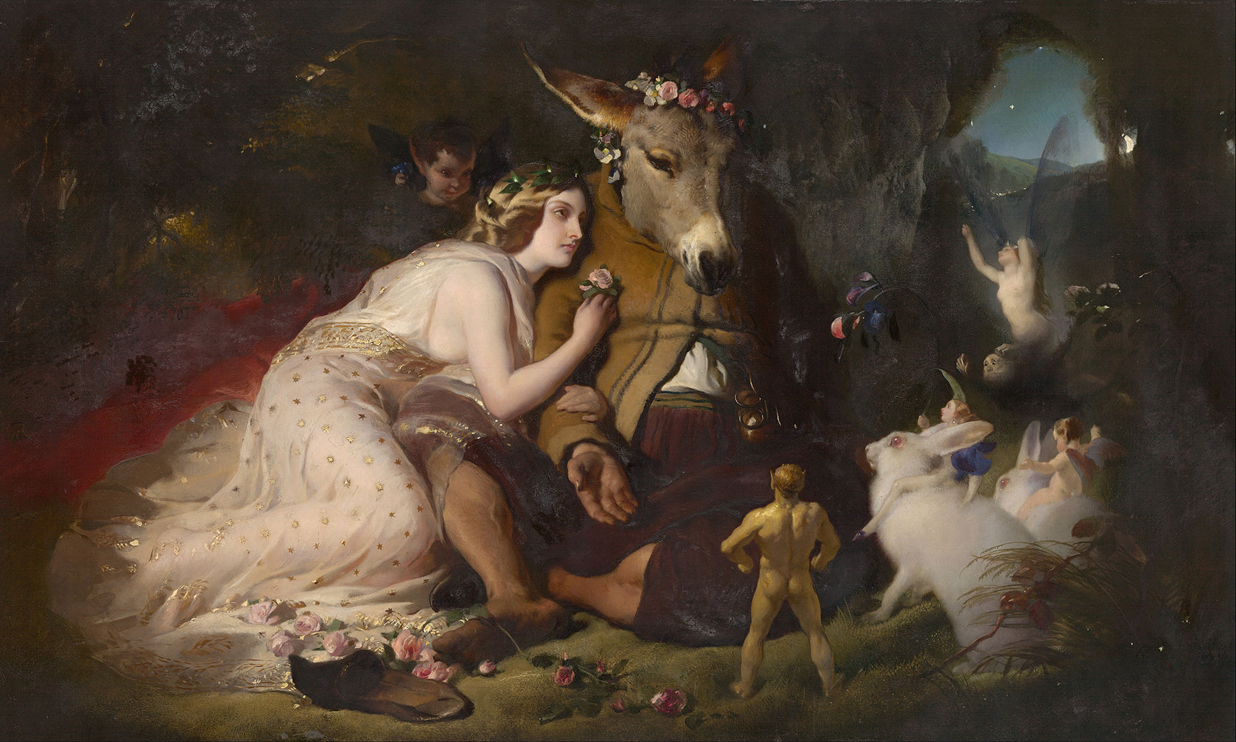
Richard Dadd
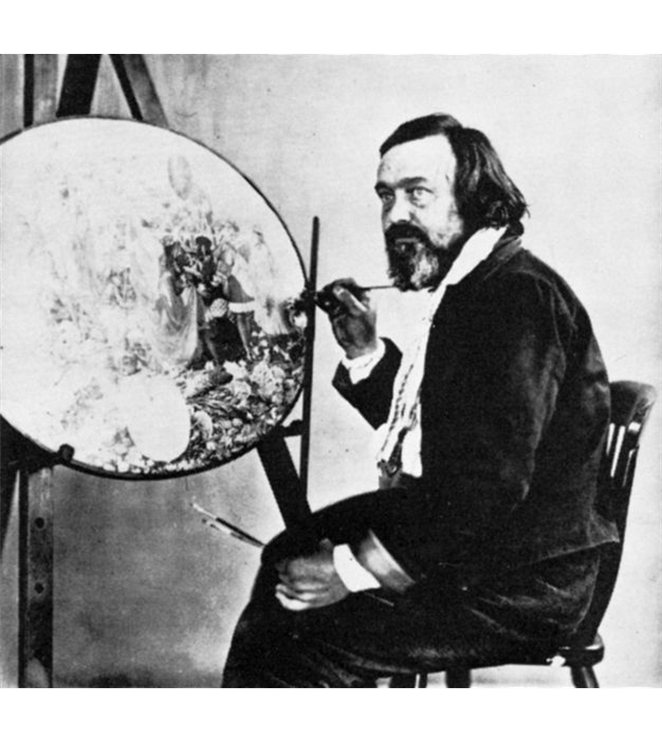
Richard Dadd's fairy paintings, created during his institutionalization, reflect the darker aspects of Victorian society as well as his troubled personal life. His notable works include:
Titania Sleeping, c. 1841
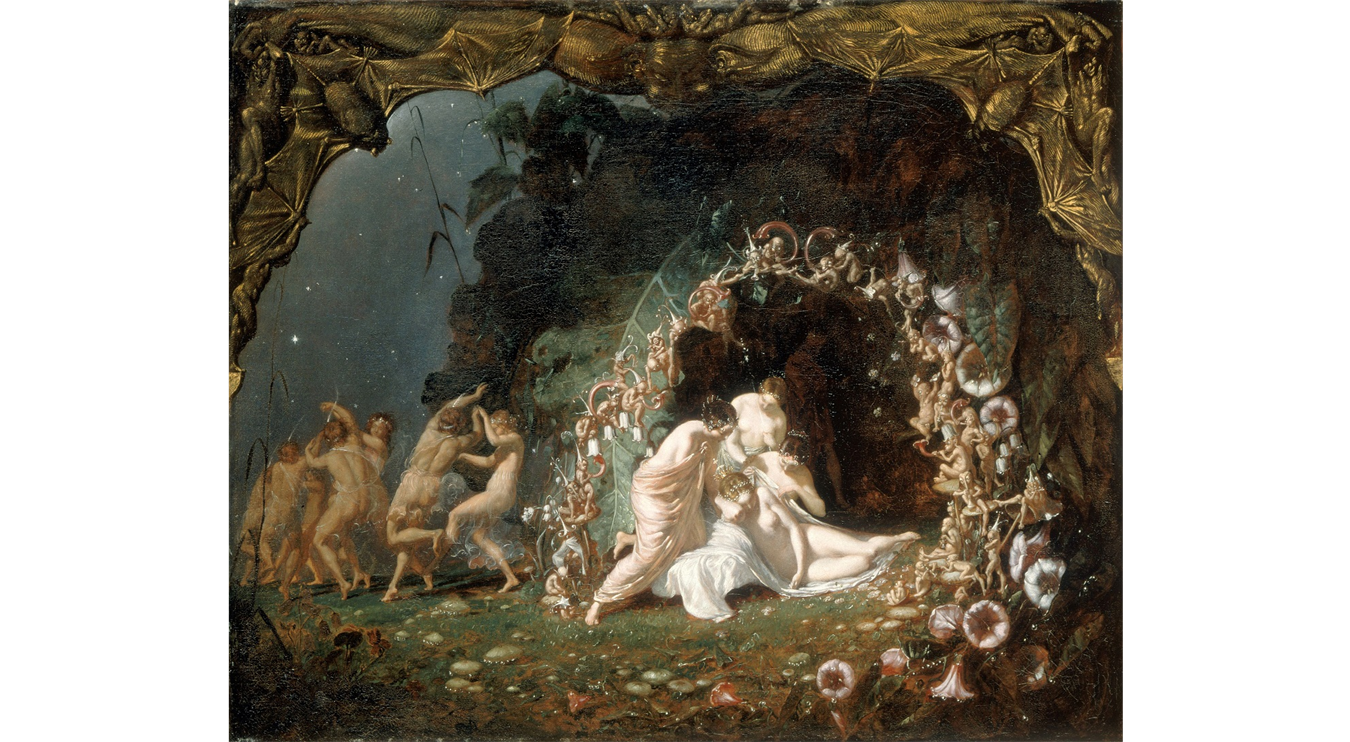
The Haunt of the Fairies, c. 1841
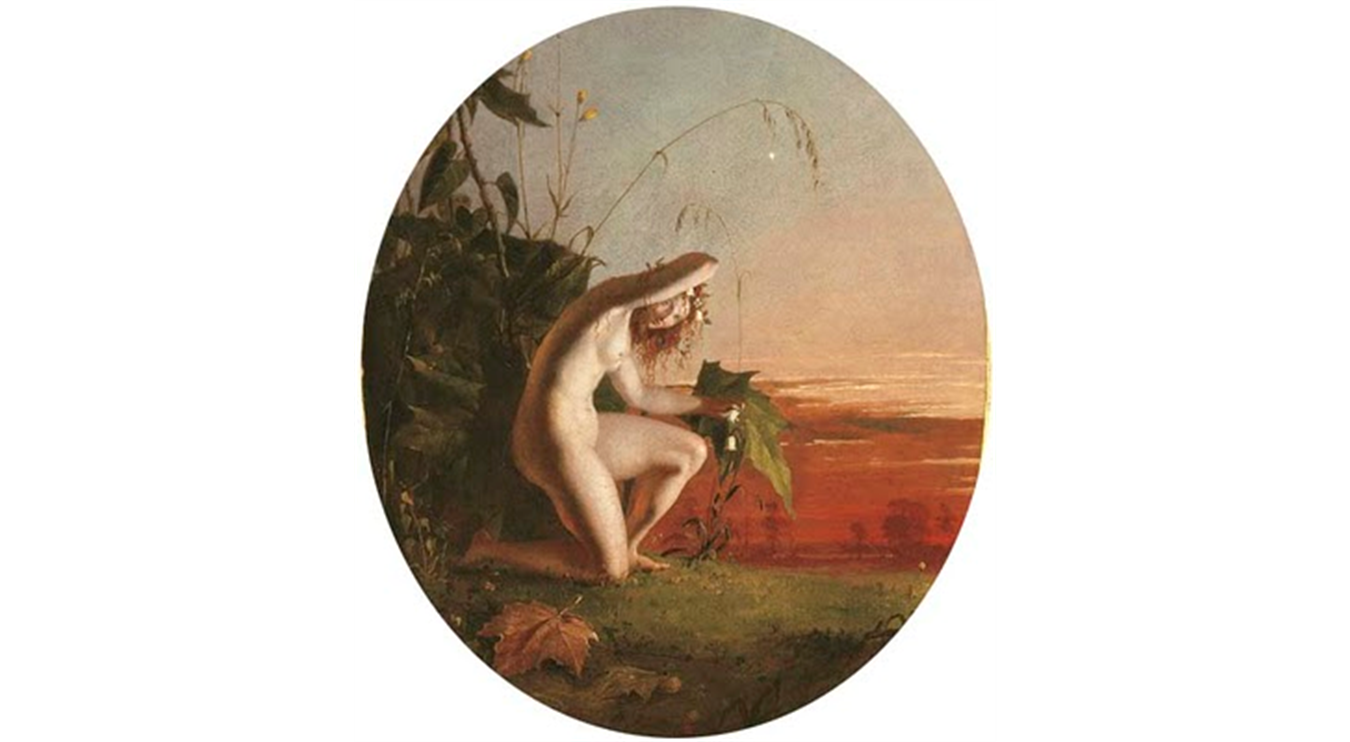
The Flight out of Egypt, c. 1849-50
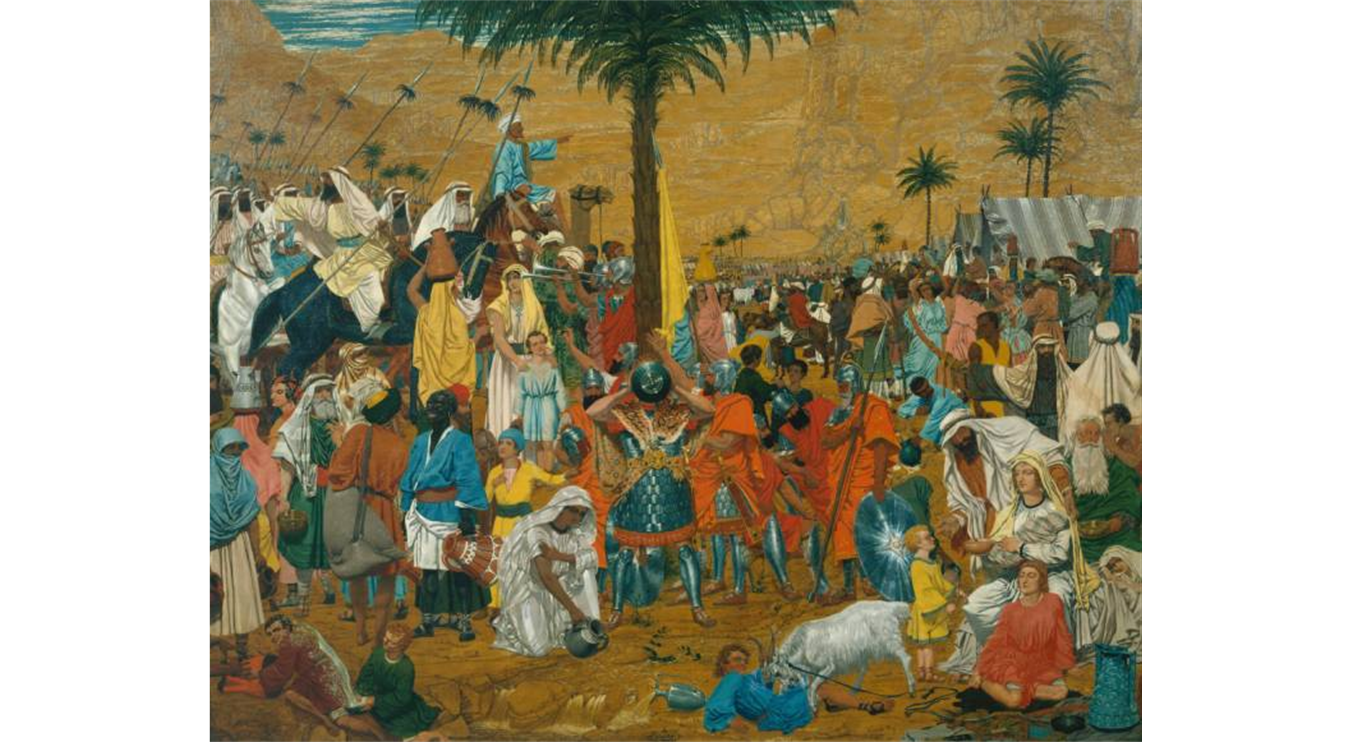
Fairy Feller's Master Stroke, 1855-64

Dadd's complex life and artistic contributions serve as a poignant reminder of the intersection between art and mental health in the Victorian era.